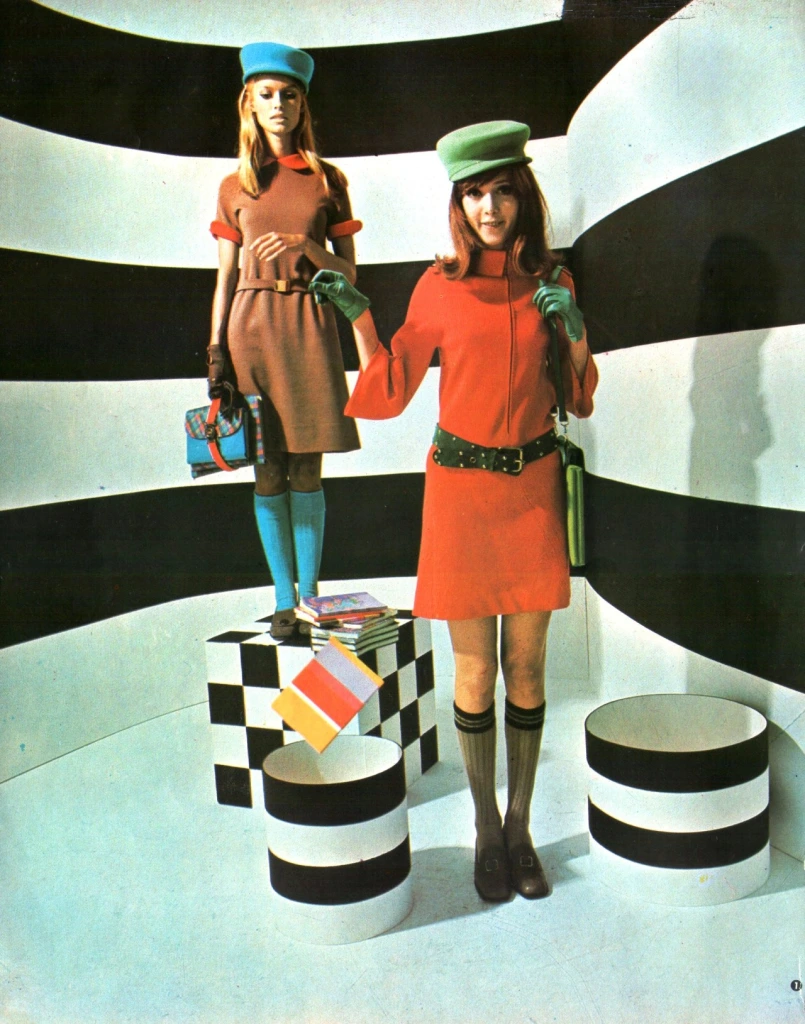Dive into the Mod Movement of the 1960s, a shift in fashion that embraced youth culture, modernity, and individualism, redefining style for a new generation.
The Mod Movement, short for “Modernist,” was a significant fashion and cultural phenomenon that emerged in the early 1960s in London. Characterized by bold, youthful, and avant-garde style, the Mod Movement represented a radical bold shift from the conservative fashions of the previous decade. It embraced clean lines, geometric patterns, bright colors, and a sense of rebelliousness, reflecting a desire for individualism, modernity, and self-expression. Understanding the Mod Movement provides insight into how this bold shift shaped youth culture and fashion during the 1960s and beyond.
Origins of the Mod Movement

The Mod Movement began in London in the late 1950s and gained momentum in the early 1960s. Initially inspired by modern jazz and Italian tailoring, the movement quickly evolved into a broader cultural and fashion phenomenon. Mods were young, working-class individuals who rejected the staid, traditional styles of their parents’ generation, opting instead for a more streamlined and cutting-edge aesthetic. This new fashion was characterized by slim-fitting suits, tailored jackets, narrow ties, and sleek hairstyles for men, while women embraced short skirts, A-line dresses, and bold makeup.
Key Influences and Cultural Context

The Mod Movement was heavily influenced by several cultural elements, including music, art, and global trends. British bands like The Beatles, The Who, and The Rolling Stones became style icons, promoting the Mod look with their tailored suits and Chelsea boots. Art movements such as Pop Art, led by figures like Andy Warhol, also played a significant role in shaping Mod aesthetics, emphasizing bold colors, geometric shapes, and graphic designs. Additionally, the economic boom of post-war Britain allowed for greater consumerism and access to fashion, helping to popularize Mod styles among the youth.
Key Elements of Mod Fashion
Mod fashion was defined by its sleek and tailored silhouettes, vibrant colors, and bold patterns. It embraced a minimalist approach with a futuristic edge, reflecting the youthful energy and optimism of the 1960s. The following are some of the key elements that defined Mod fashion:
Women’s Mod Fashion: Mini Skirts and Bold Prints


Women’s fashion during the Mod era was marked by the introduction of the mini skirt, a revolutionary garment that became a symbol of liberation and modernity. Designers like Mary Quant popularized the mini skirt, which challenged traditional notions of modesty and femininity. Bold prints, such as polka dots, stripes, and checkerboards, were also popular, often paired with knee-high boots and colorful tights. Accessories like oversized sunglasses, berets, and chunky jewelry completed the Mod look, adding a playful and youthful flair.
The Influence of Mary Quant


Mary Quant, a British fashion designer, was a leading figure in the Mod Movement and is often credited with inventing the mini skirt. Her boutique, Bazaar, on London’s King’s Road, became a hub for young women seeking bold and innovative fashion. Quant’s designs emphasized simplicity and practicality, often featuring clean lines and vibrant colors that appealed to the emerging youth culture. Her influence extended beyond fashion, as she became a symbol of female empowerment and a pioneer of modern, ready-to-wear clothing.
Men’s Mod Fashion: Tailored Suits and Parkas


For men, Mod fashion was characterized by tailored suits, often in slim cuts with narrow lapels and tapered trousers. The suits were typically made from lightweight materials and featured bold colors or patterns, such as pinstripes or checks. The classic Mod look also included button-down shirts, skinny ties, and polished shoes. Parkas became an iconic element of the Mod wardrobe, especially among those who rode scooters, which were a central part of Mod culture. The military-style parkas, often adorned with patches and badges, provided both practicality and a distinctive style.
The Cultural Impact of the Mod Movement
The Mod Movement was more than just a fashion trend; it was a cultural revolution that challenged social norms and traditional values. The movement emphasized individualism, freedom of expression, and a break from the past, reflecting broader social changes occurring in the 1960s. It played a significant role in shaping the counterculture of the era, influencing music, film, and art.

The Role of Music and Media
Music played a crucial role in the Mod Movement, with bands like The Beatles, The Who, and The Kinks embodying the Mod spirit. These bands not only influenced fashion but also shaped the cultural and social landscape of the 1960s. Media, including television and magazines, also helped spread Mod fashion and culture beyond London, making it a global phenomenon. Films like “Blow-Up” and “Quadrophenia” captured the essence of the Mod lifestyle, further solidifying its place in popular culture.
The Legacy of the Mod Movement in Contemporary Fashion
The Mod Movement’s influence can still be seen in contemporary fashion, with designers regularly revisiting its clean lines, bold patterns, and playful aesthetic. The movement’s emphasis on youth, rebellion, and self-expression continues to inspire modern fashion trends, particularly in streetwear and retro-inspired collections.

Mod Revival and Modern Adaptations
The Mod Movement experienced a revival in the late 1970s and 1980s, with bands like The Jam and The Specials bringing the style back into the spotlight. Today, elements of Mod fashion can be seen in various subcultures and fashion styles, from indie rock to vintage-inspired looks. The timeless appeal of the Mod aesthetic lies in its simplicity, versatility, and ability to adapt to changing cultural landscapes.
Conclusion
The Mod Movement represented a bold shift in 1960s fashion, characterized by its emphasis on youth, individuality, and modernity. From its origins in London to its global influence, the Mod Movement transformed fashion and culture, leaving a lasting legacy that continues to inspire designers and fashion enthusiasts today. The movement’s impact on fashion, music, and culture is a testament to its enduring appeal and revolutionary spirit.
